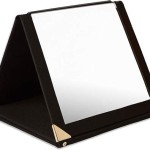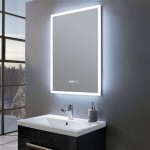How To Mirror iPhone to Mac with Sound
Mirroring an iPhone's screen to a Mac, complete with audio, offers numerous advantages for presentations, demonstrations, gameplay streaming, and enjoying media content on a larger display. This process leverages built-in features within macOS and iOS, eliminating the need for third-party applications in many cases.
Two primary methods facilitate iPhone screen mirroring to a Mac with sound: QuickTime Player and AirPlay. The optimal choice depends on the user's specific needs and the macOS version installed on the Mac.
Mirroring with QuickTime Player
QuickTime Player, a pre-installed application on macOS, provides a wired solution for mirroring an iPhone to a Mac. This method offers a stable connection and high-quality audio and video transmission, making it suitable for tasks requiring precise synchronization, such as recording device demonstrations.
To mirror using QuickTime Player, users should connect their iPhone to the Mac using a Lightning to USB cable. Upon launching QuickTime Player, users should select "New Movie Recording" from the File menu. A recording window will appear, displaying the Mac's built-in camera as the default input source.
Next, users should click the dropdown arrow next to the record button. This will present a list of available video and audio input sources. From this list, users should select their connected iPhone as the video and audio source. The iPhone's screen will then be mirrored to the Mac's display, including sound output.
While QuickTime Player allows recording of the mirrored screen, recording is not mandatory for mirroring functionality. Users can simply choose not to press the record button to utilize QuickTime Player solely for mirroring purposes.
This wired method ensures a consistent and reliable connection, minimizing latency and maximizing audio and video fidelity.
Mirroring with AirPlay
AirPlay offers a wireless mirroring solution, providing greater flexibility and freedom of movement. This method relies on a shared Wi-Fi network between the iPhone and Mac. AirPlay mirroring is supported on Macs running macOS Monterey or later.
To initiate AirPlay mirroring, users must ensure both the iPhone and Mac are connected to the same Wi-Fi network. On the iPhone, users should open Control Center. The method for accessing Control Center varies depending on the iPhone model. On iPhones with Face ID, users swipe down from the top-right corner of the screen. On iPhones with a Home button, users swipe up from the bottom of the screen.
Within Control Center, users should locate the "Screen Mirroring" icon. Tapping this icon will display a list of available AirPlay destinations. The user should select their Mac from this list. The iPhone's screen will then be wirelessly mirrored to the Mac's display, including audio.
AirPlay mirroring allows for untethered screen sharing, ideal for presentations and media consumption. However, the quality of the connection, including audio and video fidelity, can be affected by the strength and stability of the Wi-Fi network.
Troubleshooting Common Mirroring Issues
Occasionally, users may encounter issues during the mirroring process. Several common problems and their solutions are outlined below.
**No Audio Output:** Verify that the correct audio output device is selected on both the Mac and iPhone. Ensure the volume is turned up on both devices. If using AirPlay, check the Wi-Fi network connection strength.
**Lagging or Choppy Video:** If experiencing performance issues with AirPlay, move the iPhone closer to the Mac or router to improve the Wi-Fi signal. Close unnecessary applications on both devices to free up system resources.
**Connection Problems:** If encountering connection issues with QuickTime Player, ensure the USB cable is securely connected to both the iPhone and Mac. Try a different USB cable to rule out cable malfunction. For AirPlay issues, verify that both devices are connected to the same Wi-Fi network and that AirPlay is enabled on the Mac.
By following these steps and troubleshooting tips, users can successfully mirror their iPhone to their Mac with sound, enabling seamless sharing and enhanced productivity across devices.
Regularly updating both macOS and iOS ensures compatibility and often introduces performance improvements and bug fixes, contributing to a more stable and reliable mirroring experience. Consulting Apple's official support documentation can provide further assistance for specific device models and software versions.

How To Mirror Iphone Display Macbook Ios 12 Macos Mojave

How To Mirror Iphone Mac 8 Methods

2024 Updated How To Mirror Iphone Mac With 5 Methods

2024 Updated How To Mirror Iphone Mac With 5 Methods

How To Mirror Iphone Screen Mac Quick Easy Wireless 2024

How To Use Apple Airplay Mirror Your Iphone Mac Screen On Tv Roku And More Cnet

How To Mirror Iphone Mac Wirelessly Full Guide

How To Mirror Iphone Mac Without Wi Fi

How To Screen Mirror Iphone Mac Istyle Apple Uae

How To Mirror Iphone Windows Pc Laptop Mac Full Guide








